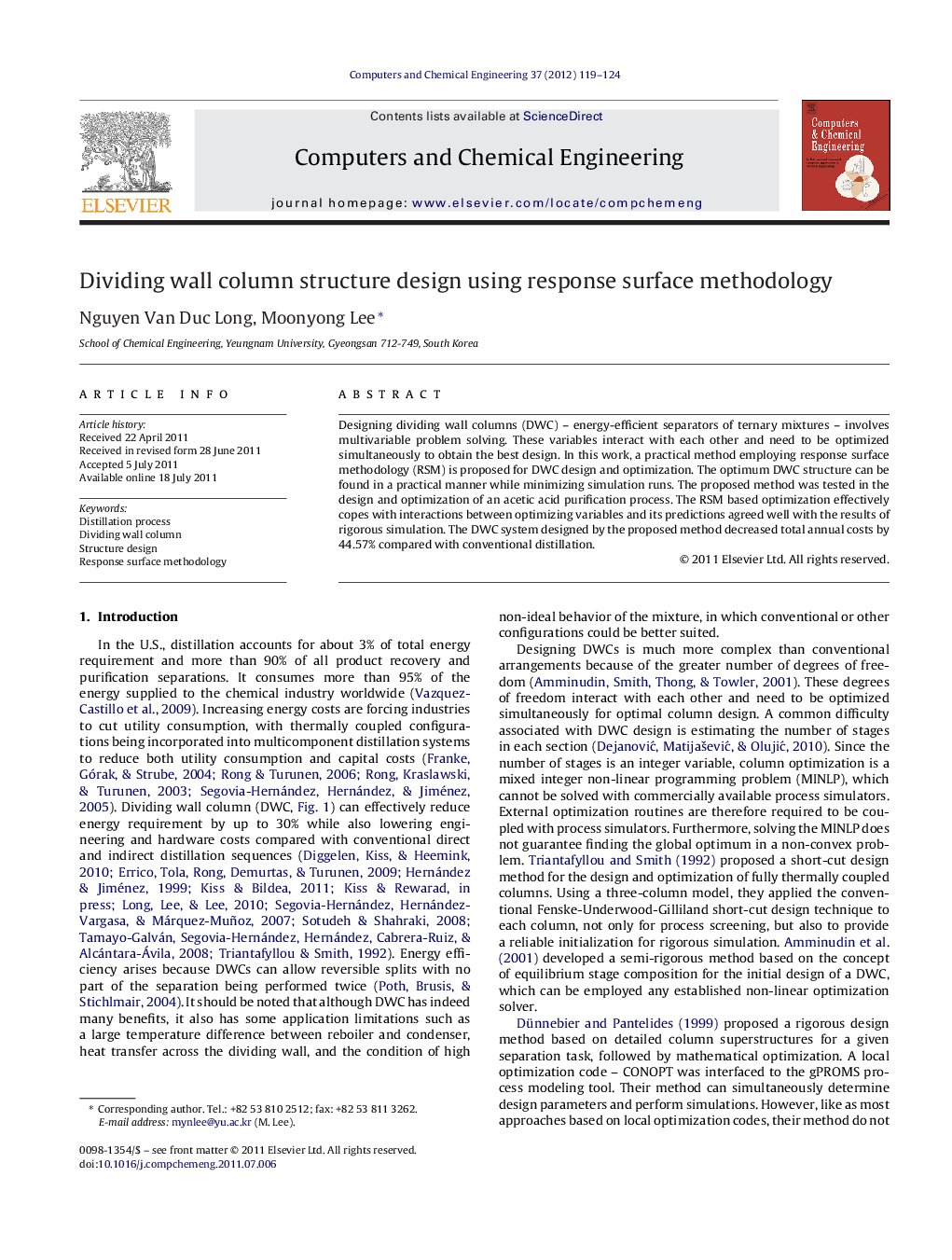| Article ID | Journal | Published Year | Pages | File Type |
|---|---|---|---|---|
| 172903 | Computers & Chemical Engineering | 2012 | 6 Pages |
Designing dividing wall columns (DWC) – energy-efficient separators of ternary mixtures – involves multivariable problem solving. These variables interact with each other and need to be optimized simultaneously to obtain the best design. In this work, a practical method employing response surface methodology (RSM) is proposed for DWC design and optimization. The optimum DWC structure can be found in a practical manner while minimizing simulation runs. The proposed method was tested in the design and optimization of an acetic acid purification process. The RSM based optimization effectively copes with interactions between optimizing variables and its predictions agreed well with the results of rigorous simulation. The DWC system designed by the proposed method decreased total annual costs by 44.57% compared with conventional distillation.
► Statistical modeling technique offers a novel and practical way to structure design. ► Response surface methodology (RSM) is utilized for optimum DWC structure design. ► Prediction by RSM agrees well with the actual trend from rigorous simulation. ► The DWC designed by RSM reduces annual cost by 44.6% in acetic acid process.
